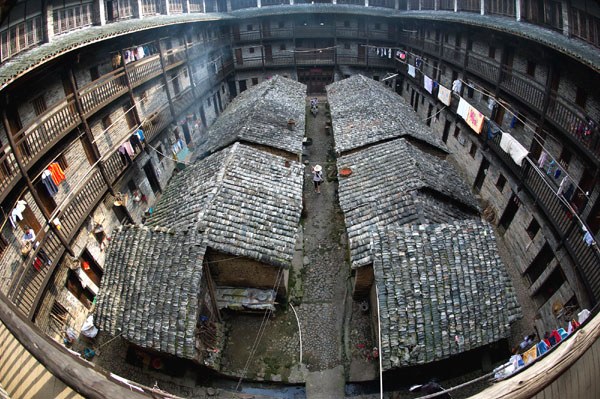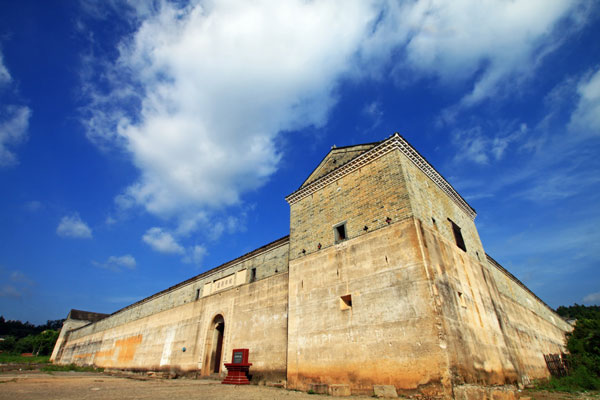Dubbed the "Ancient Roman Castles of the Orient", more than 600 enclosed houses in southern Jiangxi province still stand today, testament to the history of the Hakka people, who migrated here from Central China and built these mini-fortresses to defend themselves against local outlaws.
First built during the Ming Dynasty (1368-1644) and improved on in the early Qing Dynasty (1644-1911), the enclosed houses are boxed in and well protected by triangular fence walls.

The Hakka enclosed houses are spread among several counties in Jiangxi's Ganzhou. There are 376 enclosed houses scattered in Longnan county, which feature the most diverse range of shapes.
The Guanxi New Enclosed House, for example, is the biggest, most versatile and best preserved among the 27 enclosed houses in Longnan county's Guanxi township.
Constructed between 1798 and 1827, the 7,700-square-meter rectangular complex belonged to Xu Mingjun, a Hakka merchant originally from Shandong province (houses many famous attractions for popular China travel package) who ran a lumber business during the Qing Dynasty.
The building is nothing like the local buildings in southern Jiangxi province. The rectangular house is built adhering to the same principles as houses built in the Central Plains area, where the Xu family was originally from.
At the center is the ancestral hall, which divides the symmetrical left and right sides of the building.
The lower, middle and upper halls were used by the landlord and servants for a variety of functions. There are also guest rooms and a family-owned theater.
Home sweet home
Around 20 households still live within these walls. It is not uncommon to see a resident making the local Hakka snack tang pi, a kind of cracker made with milled rice and Chinese chives.
Li Manyu, 95, sits in the yard and enjoys the sunshine. She has been living in this enclosed house since 1949, after marrying into the Xu family.
Li says the house was not big enough for the whole family so her children moved out. But she refused.
"I have gotten used to the comfort of living here," says the elderly woman. "Although it rains a lot in Guanxi, the house never floods."
"The enclosed houses in the Qing Dynasty were well designed before construction," says Lai Jianqing, a local Hakka culture (its charm attracts tourists for China best tours) expert. "But in earlier periods there were houses first, then the fence wall."

The Liyuan Enclosed House in Liren township constructed during the Ming Dynasty (learn more about the dynasty via China travel guide) is the biggest in Longnan county - six times bigger than the Guanxi enclosed house.
The unusual shape of its outer wall indicates that it was added after the houses were built. It was constructed for defense purposes, Lai says.
The three front doors indicate the house belonged to an official's family. The central door was only used by the landlord and honored guests.
Behind the doors and main rooms is a maze-like area composed of 64 alleys, which was also built for security.
No comments:
Post a Comment